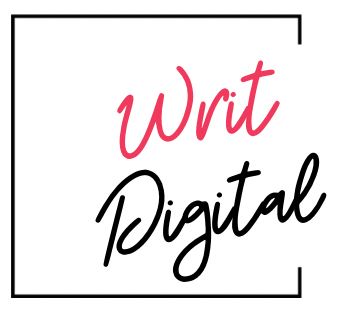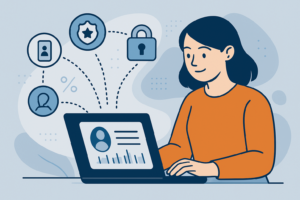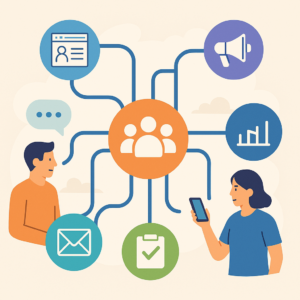In today’s fast-moving digital economy, shifting culture to embrace digital-first thinking isn’t optional—it’s essential. This is especially true in the world of direct selling, where traditional methods and legacy mindsets can slow down progress. While many companies invest heavily in technology, the truth is simple: technology alone doesn’t drive transformation—people do.
Why Culture Is the Real Game Changer
Digital transformation in direct selling often focuses on platforms, automation tools, and data systems. But if the people using these tools aren’t ready—or willing—to shift how they work, the investment falls flat. Culture is the hidden force behind every successful transformation. It shapes how people think, act, and collaborate. If your company’s culture isn’t aligned with digital-first thinking, it creates friction instead of momentum.
For example, field reps might be hesitant to adopt automation tools or skeptical about using data to guide their outreach. Others may feel overwhelmed by technology or see it as a threat to their tried-and-true methods. These reactions are understandable—but they must be addressed head-on.
What Digital-First Thinking Really Means
Digital-first doesn’t mean “all tech, no human.” It means using technology to enhance the customer and consultant experience. It means designing processes that are accessible, scalable, and informed by real-time data. For direct selling, that might look like:
- Using predictive analytics to target the right prospects.
- Automating onboarding for new consultants.
- Equipping the field with mobile-first content and real-time support.
It’s about making digital tools feel natural—not forced. And that takes cultural alignment.
Model Digital-First Leadership at Every Level
To shift culture, leadership must go first. Leaders across corporate and field organizations need to demonstrate digital behaviors—consistently. If a VP isn’t using the company’s mobile app, why would a new rep take it seriously? If team leaders still praise high-touch, analog methods while ignoring digital wins, transformation stalls.
Encourage leaders to:
- Share digital success stories in team meetings.
- Engage on digital platforms the same way they expect others to.
- Acknowledge and reward experimentation with new tools—even when results are mixed.
When digital-first thinking is visible at the top, it becomes easier to embed throughout the organization.
Make Digital Literacy a Core Competency
One of the most effective ways to embed digital-first thinking is through training. But this isn’t just about one-time workshops. Companies need to treat digital literacy as a core part of onboarding and ongoing development.
That means:
- Introducing new consultants to digital tools on day one.
- Offering microlearning content to reinforce usage.
- Creating mentorship or “digital buddy” programs to build confidence.
Empowering reps with digital skills doesn’t just improve adoption—it builds trust and reduces fear.
Example: Avon has made strides in embedding digital tools across its global teams, training reps to sell through personalized online stores and mobile apps. This shift has helped modernize the brand while honoring its relational roots (source).
Recognize and Celebrate Digital Wins
To make culture change stick, companies must normalize new behaviors. One powerful way to do that is through recognition.
Consider:
- Creating monthly spotlights for digital-savvy field leaders.
- Showcasing “before and after” digital transformation stories.
- Highlighting consultants who use data to drive better results.
Recognition reinforces that digital-first isn’t just encouraged—it’s expected.
Example: At Scentsy, leadership recognized consultants who leveraged digital storytelling and social media to grow their businesses, giving them stage time at conferences and featuring them in corporate newsletters (source).
Build a Feedback Loop
Digital transformation is not a one-and-done effort. As culture begins to shift, it’s important to listen, adapt, and improve. Create regular opportunities for the field to provide input on digital tools, processes, and communication.
- Run short feedback surveys after training sessions.
- Host monthly digital “office hours” with IT and marketing.
- Create a shared space for reps to submit feature ideas or app requests.
When people feel heard, they’re more likely to stay engaged. And that engagement fuels cultural change.
Example: Salesforce emphasizes the importance of employee feedback in shaping digital change, creating cross-functional listening programs to identify blockers and opportunities (source).
Final Thoughts
Shifting culture to embrace digital-first thinking is not easy—but it is possible. It takes clear leadership, consistent reinforcement, and a deep understanding of the people at the center of it all. For direct selling companies ready to evolve, this cultural shift is the most important transformation of all.
Why Culture Is the Real Game Changer
Digital transformation in direct selling often focuses on platforms, automation tools, and data systems. But if the people using these tools aren’t ready—or willing—to shift how they work, the investment falls flat. Culture is the hidden force behind every successful transformation. It shapes how people think, act, and collaborate. If your company’s culture isn’t aligned with digital-first thinking, it creates friction instead of momentum.
For example, field reps might be hesitant to adopt automation tools or skeptical about using data to guide their outreach. Others may feel overwhelmed by technology or see it as a threat to their tried-and-true methods. These reactions are understandable—but they must be addressed head-on.
What Digital-First Thinking Really Means
Digital-first doesn’t mean “all tech, no human.” It means using technology to enhance the customer and consultant experience. It means designing processes that are accessible, scalable, and informed by real-time data. For direct selling, that might look like:
- Using predictive analytics to target the right prospects.
- Automating onboarding for new consultants.
- Equipping the field with mobile-first content and real-time support.
It’s about making digital tools feel natural—not forced. And that takes cultural alignment.
Model Digital-First Leadership at Every Level
To shift culture, leadership must go first. Leaders across corporate and field organizations need to demonstrate digital behaviors—consistently. If a VP isn’t using the company’s mobile app, why would a new rep take it seriously? If team leaders still praise high-touch, analog methods while ignoring digital wins, transformation stalls.
Encourage leaders to:
- Share digital success stories in team meetings.
- Engage on digital platforms the same way they expect others to.
- Acknowledge and reward experimentation with new tools—even when results are mixed.
When digital-first thinking is visible at the top, it becomes easier to embed throughout the organization.
Make Digital Literacy a Core Competency
One of the most effective ways to embed digital-first thinking is through training. But this isn’t just about one-time workshops. Companies need to treat digital literacy as a core part of onboarding and ongoing development.
That means:
- Introducing new consultants to digital tools on day one.
- Offering microlearning content to reinforce usage.
- Creating mentorship or “digital buddy” programs to build confidence.
Empowering reps with digital skills doesn’t just improve adoption—it builds trust and reduces fear.
Example: Avon has made strides in embedding digital tools across its global teams, training reps to sell through personalized online stores and mobile apps. This shift has helped modernize the brand while honoring its relational roots (source).
Recognize and Celebrate Digital Wins
To make culture change stick, companies must normalize new behaviors. One powerful way to do that is through recognition.
Consider:
- Creating monthly spotlights for digital-savvy field leaders.
- Showcasing “before and after” digital transformation stories.
- Highlighting consultants who use data to drive better results.
Recognition reinforces that digital-first isn’t just encouraged—it’s expected.
Example: At Scentsy, leadership recognized consultants who leveraged digital storytelling and social media to grow their businesses, giving them stage time at conferences and featuring them in corporate newsletters (source).
Build a Feedback Loop
Digital transformation is not a one-and-done effort. As culture begins to shift, it’s important to listen, adapt, and improve. Create regular opportunities for the field to provide input on digital tools, processes, and communication.
- Run short feedback surveys after training sessions.
- Host monthly digital “office hours” with IT and marketing.
- Create a shared space for reps to submit feature ideas or app requests.
When people feel heard, they’re more likely to stay engaged. And that engagement fuels cultural change.
Example: Salesforce emphasizes the importance of employee feedback in shaping digital change, creating cross-functional listening programs to identify blockers and opportunities (source).
Final Thoughts
Shifting culture to embrace digital-first thinking is not easy—but it is possible. It takes clear leadership, consistent reinforcement, and a deep understanding of the people at the center of it all. For direct selling companies ready to evolve, this cultural shift is the most important transformation of all.






